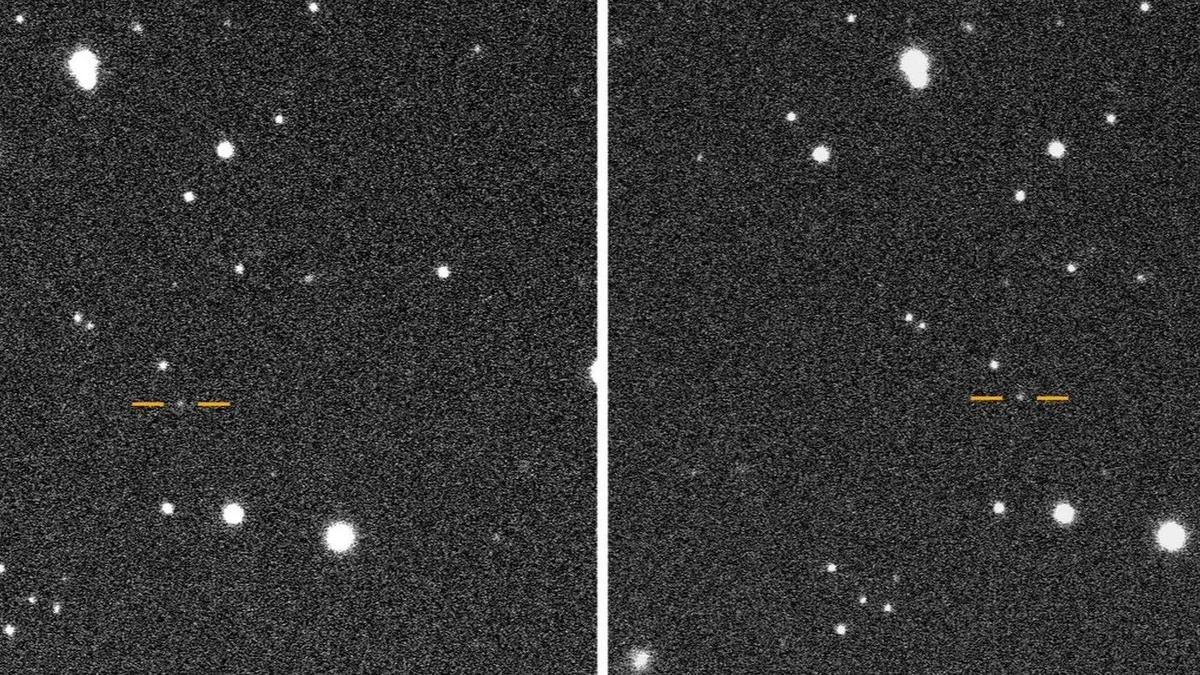
A team of astronomers has made a remarkable discovery of a 2,300-foot-wide (700 meters) asteroid, dubbed 2025 SC79, which was hidden from view by the sun's glare. This colossal asteroid is zooming through our solar system at an astonishing speed, making it one of the fastest known celestial bodies.
The asteroid 2025 SC79 completes an orbit around the sun approximately every 128 days, positioning it as the second-fastest asteroid orbiting in our solar system. Furthermore, it is noteworthy for being the second known object that orbits entirely within Venus' orbit, occasionally even intersecting the orbit of Mercury.
The discovery was made by Scott Sheppard, an astronomer at the Carnegie Science Research Institute in Washington, D.C., on September 27. The asteroid’s location behind the sun's glare posed significant observational challenges, according to a statement from Carnegie Science. Detecting hidden asteroids like 2025 SC79 is crucial for planetary defense, ensuring that potentially hazardous space rocks do not unexpectedly approach Earth.
Sheppard emphasized that the most dangerous asteroids are often the hardest to detect. While many asteroids are identified in the dark of night, those near the sun can only be observed during twilight, when the sun is just about to rise or set. If these 'twilight' asteroids come close to Earth, they could pose significant impact risks.
To illustrate the size of 2025 SC79, consider that the so-called city-killer asteroid 2024 YR4, discovered earlier this year, measures only around 180 feet (55 meters) wide. In the event that 2024 YR4 were to collide with Earth, it could unleash energy equivalent to 500 times that of the atomic bomb dropped on Hiroshima. Thankfully, it is highly unlikely that either asteroid poses an immediate threat to our planet.
Sheppard and his team utilized the Dark Energy Camera on the National Science Foundation’s (NSF) Blanco 4-meter telescope to make the initial discovery of 2025 SC79. The asteroid’s existence was subsequently confirmed through observations from the NSF's Gemini telescope and the Carnegie Science's Magellan telescopes.
This discovery marks the second ultra-fast asteroid identified by Sheppard and his colleagues in recent years. In 2021, they identified the fastest known asteroid, named 2021 PH27, which orbits the sun in just 113 days, making it 15 days quicker than 2025 SC79. The only faster orbiting object in our solar system is the planet Mercury, completing its orbit in 88 days.
Currently, 2025 SC79 is behind the sun, making it invisible for several months. Researchers plan to conduct further observations in the future to gain more insights into this fascinating object. Understanding asteroids like 2025 SC79 is vital for piecing together the history of our solar system and identifying potential threats.
Many of the solar system's asteroids reside in one of two primary belts of space rocks. However, perturbations can shift these objects into closer orbits, making them harder to detect. Sheppard noted that understanding how asteroids arrive at these locations is essential for protecting our planet and enhancing our knowledge of solar system history.